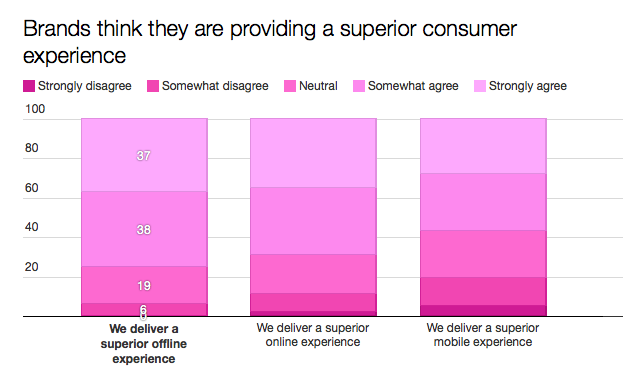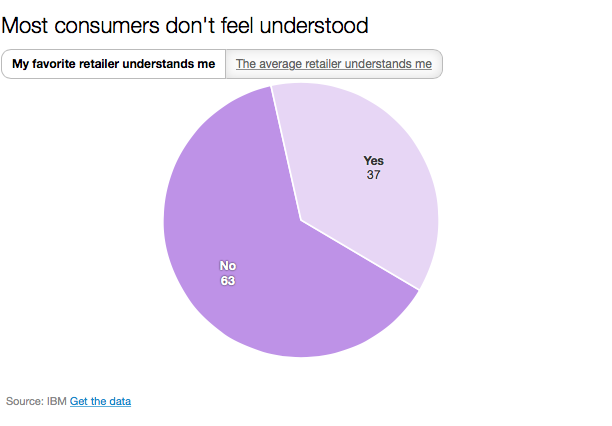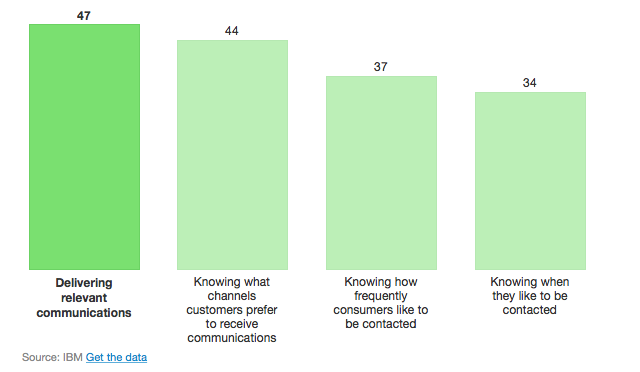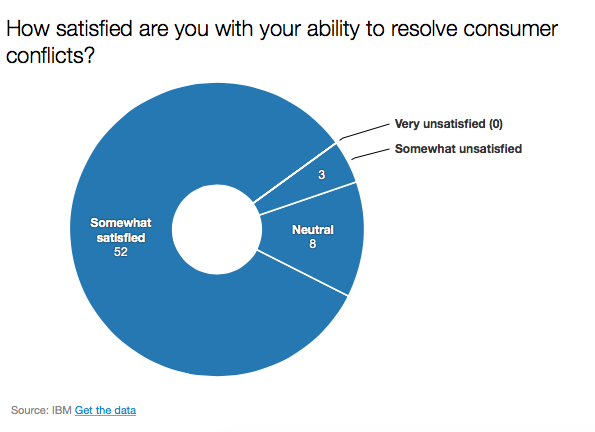With the right marketing campaign, a company or marketing team can easily connect with a consumer, provided it has the right “hook” to bring them in or make them want to invest in their product. However, what happens when a certain brand isn’t in touch with its audience It occurs more often than you might think.
As reported by DigiDay, a series of charts broken down by IBM and Econsultancy explain just how out of touch companies may be when it comes to giving consumers what they want — and we mean consumers in general, not just a specific audience like millennials or Generation Z.
“The biggest takeaway was the disconnect between how marketers perceive the job they’re doing and how consumers perceive that job,” said Jay Henderson, director for product strategy at IBM Commerce.
A number of brands “strongly agree” that they’re going above and beyond with experience, through offline, online and mobile ads. However, the study shows that there’s a disconnection with consumers when it comes to a certain understanding, even with investment in infrastructure and solutions, according to Henderson.

The first chart indicates just how much confidence companies have in their experience both offline and online. However, in mobile, you can see difference in the disagree department, showing that they may have a ways to go.
“We’ve seen this explosion of channels and devices that collect and store that data,” said Henderson. “But there is still a gap in terms of what companies are doing with that data. There’s a gap in terms of interpreting and analyzing that data.”

The second chart shows even more stark difference, as 63 percent of consumers feel that retailers don’t understand them — even their favorites.

Then there are the communication capabilities, with companies feeling that delivering relevant communications is the top priority, followed by relating to consumers and realizing the best time to contact them. However, companies that aren’t considered favorites received even less favoritism, with only 21 percent indicating that messages are “usually relevant,” rather than important.

The next chart shows companies being confident in how they resolve consumer matters, with a whopping amount saying they feel somewhat satisfied with results, and only a minor few showing unsatisfactory results. However, the next chart below indicates a different story from the consumer’s point of view.

This final chart indicates that while some companies “somewhat effectively” know how to resolve a consumer’s issue, there are still large groups that feel that they have performed either “somewhat ineffectively” or “very ineffectively,” showing the stark difference between how some companies’ consumer service is acting, and where it should be.
While some companies obviously won’t change their habits anytime soon, these charts should be real eye-openers for a specific few, especially when it comes to the overall effectiveness of a campaign. After all, if you can’t draw consumers to the product in the first place, how is that effective

